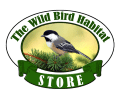January is the time of the year when winter storms can rapidly develop and approach rapidly with heavy snows. To date many parts of the country have been spared by unseasonably warmer temperatures with little precipitation. But when the snows do arrive they rapidly cover many food sources for birds along with the grit needed…
Prairie Fire Newspaper The Progressive Voice of the Great Plains Fall and Winter Bird Feeding by Dave Titterington Wild Bird Habitat Stores Spring and Summer Bird Feeding by Dave Titterington Wild Bird Habitat Stores Purple Martins The longest managed bird in North America by Dave Titterington Wild Bird Habitat Store American White Pelican White Pelican…
December is the month for the annual Christmas Bird Count. Now in its 112th year, it is fun and adventurous. There are always a number of rare or unusual birds that are sighted. If you can participate in the field, it can be rewarding. If not, perhaps you will watch your feeders on count day…
The Fox Squirrel is the most common squirrel in Nebraska, with Grey Squirrels along the lower Missouri River, and a spattering of Black Squirrels in the Eastern part of the state. But worldwide there are over 365 species of squirrels! An adult squirrel typically lives alone, but will huddle together in their nests during extreme…
Can anything beat the sight of a bright red Cardinal against a backdrop of white snow? As a resident of the Eastern Great Plains, the Northern Cardinal is a faithful visitor to feeders and can be one of the easier species to attract. It is such a popular and widespread species throughout the east, that…
Identifying the Hawk In Your Backyard Identifying birds of prey can be a challenge, and the two most challenging raptors are the Cooper’s Hawk and Sharp-shinned Hawk. Nearly identical in markings, range and behavior, these accipiters are closely related and can be difficult for even experienced birders to tell apart. Sharp-shinned Hawk Cooper’s Hawk…
Leave some Leaves Autumn is definitely in the air and as temperatures begin to fall, so do the leaves. But before you rush out and scour the yard removing all the dead or dying organic matter from summer’s past, consider leaving some leafy debris under those shrubs and bushes. You’ll be surprised at the number…
Citizen Scientists It’s for the birds!!! The Value of Participating in Annual Bird Counts as a Citizen Scientist In 2001, Cornell University’s Lab of Ornithology identified that the Chickadee population had reached a twelve-year record high. This information was gathered from the data provided by bird enthusiasts who participated as citizen scientists in several national…
Salt Marsh Sparrow Patrol Wachiska Audubon’s Monthly Field Trip Sea blite, salt marsh aster, and saltwort sound like the type of plants that would normally be found next to an ocean, yet they flourish in the landlocked saline wetlands of Lancaster and Saunders counties in Nebraska. A handful of local salt marshes host many unique salt-tolerant…
